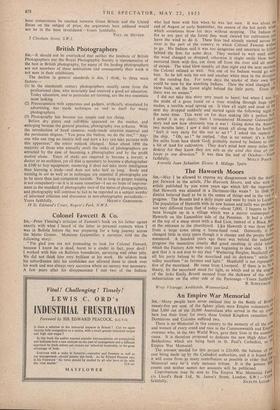British Photographers
should not be overlooked that neither the Institute of British Photographers nor the Royal Photographic Society is representative of the best in British photography, for many of the leading photographers are not members of these institutions and consequently their work is not seen in their exhibitions.
The decline in general standards is due, I think, to three main factors:—
(1) In the nineteenth century photographers usually came from the professional class, who invariably had received a good art education. Today education, and in particular art training, are the two essentials most lacking.
(2) Preoccupation with apparatus and gadgets, artificially stimulated by advertising, has made technique an end in itself for many photographers, (3) Photography has become too simple and too cheap.
Before dry plates and roll-films appeared on the market, and enlarging became the general practice, photography was arduous. With the introduction of hand cameras, ready-made sensitive material and the pernicious slogans, " You press the button; we do the rest," " Any- one who can ring an electric bell and turn a key can take pictures with this apparatus," the entire outlook changed. Since about 1890 the majority of those who annually swell the ranks of photographers are attracted by the ease of becoming a photographer and by the profit motive alone. Years of study are required to become a lawyer, a doctor or an architect, yet all that is necessary to become a photographer is £100 to buy-equipment; mastering it does not take more intelligence than learning a trade—and does not take half as long. Study and training in art as well as in technique are essential if photographs are to be more than just competent records. Yet as long as proper training is not compulsory—as it is in some countries—I see no hope of improve- ment in the standard of photography (nor of the status of photographers), and photography will continue to fail to be regarded as a subject worthy of informed criticism and discussion in non-photographic periodicals.—


































 Previous page
Previous page